UPDATE: So happy you found your way here! Obviously, you are interested in the current best practices so I’d like to point you to our comprehensive Best Practices Guide for 2019.
Ready to chat about 2018 Pinterest best practices?
Today we’re going to be talking about all the things that Pinterest has recently shared directly with content creators regarding the most current best practices. Their goal is to share more about how they operate with content creators. I think this is so amazing and so helpful that they’re communicating with us about how they want us to use the platform!
But this recent communication also brought up a few more questions and has created some confusion. In my Pinterest facebook group, I noticed that there were some assumptions being made after Pinterest shared this new information with us. Today, I’m breaking down the top five things you should be focusing on so that you don’t get bogged down in rumors. Above all else, I want to help you to avoid wasting your time and energy.
One of the assumptions I have seen in my own Facebook group is that this is a great algorithm change. If you are unsure of what an algorithm even is, it’s just a detailed, step-by-step instruction set or formula for solving a problem or completing a task. It’s a way of instructing the program, or platform, on how to do its job.
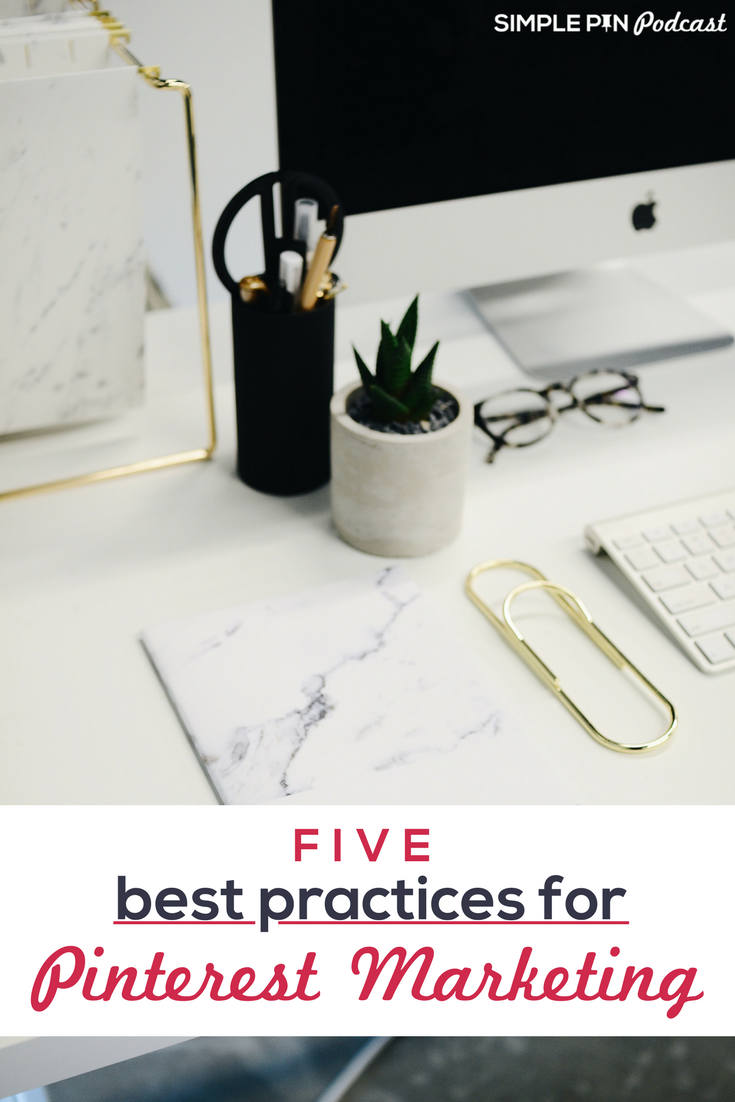
2018 Pinterest Best Practices
Change # 1 – Image Size
The first thing that did change in the algorithm and that you need to be paying attention to is image size. Images need to be a 2:3 ratio or they will not be distributed. My preferred image sizes are 600 x 900 or 735 x 1102. You can do up to 1260 but they won’t be shown, especially on mobile. All images you create moving forward need to match up with these sizes but you don’t need to spend the time to going back and updating all your old images.
Related: How to Use Pinterest Analytics the Smart Way: Keyword and Image Secrets
Change # 2 – The Definition of “Fresh Content”
What defines fresh content? Pinterest now defines fresh content as:
- a new pin from your site (if it’s just been published)
- a new pin with a new description
If you have a pin from last year, you can repin it from your site with a new description and it will be viewed as fresh content. Your other option is a new pin of old content with a non-unique description. Fresh content can be created by simply changing the description.
The most notable thing that Pinterest communicated is that you should always pin from your site and never repin from Pinterest. Let your followers do the repinning for you.
Change # 3 – The First Five Pins of the Day
We discussed the whole First 5 Pins of the Day directive in the Busting Pinterest Myths episode a few weeks back.
Update: Pinterest has removed The First Five Pins of the Day from their Best Practices so we have removed them here as well.
Change # 4 – Board Focus
For a long time, we believed that boards that we weren’t pinning to very often or that were outside of our niche were hurting us, but they’re not. What you should be focusing on is that you’re pinning to boards that contain content and keywords that your audience is searching for.
Always remember that the place where you are most active is where you will get the most engagement.
Change # 5 – Take a Deep Breath
Just take a deep breath. Take some time to do some digging into your Google analytics. I talked all about understanding Pinterest analytics in a previous podcast episode with Kristie Hill and also about “how to use Pinterest Analytics the smart way” in an episode with Monica Froese. You need to be a critical thinker when it comes your traffic. Use Google analytics to find that post that performs best and then become the party host! Greet them on your site, serve them an email opt-in, and direct them to where you want them to go.
After Pinterest dropped their series of best practices bombs, I sent a message to Kristi Hill that I wanted to share it with you as well.
We get something from Pinterest and there’s this expectation that magic will happen: A + B = C. And when that doesn’t happen, people start to panic and then they lose sight of their user and their reader. They’re then serving the algorithm instead of serving their audience. The clients we find who are most successful have two common threads:
- They know their person. They know their avatar. They know who they’re serving.
- They keep creating new content that serves their person. Their audience feels served, and as a result, their audience shares for them. They share on Pinterest without even being asked.
That’s where we see increasing traffic back to their website over and over.
I know that everybody loves a good graph with upward trends and that that makes us motivated, so I want to inspire you and encourage you today with a few from our clients who are following all of the recommendations I made above:
Client #1:
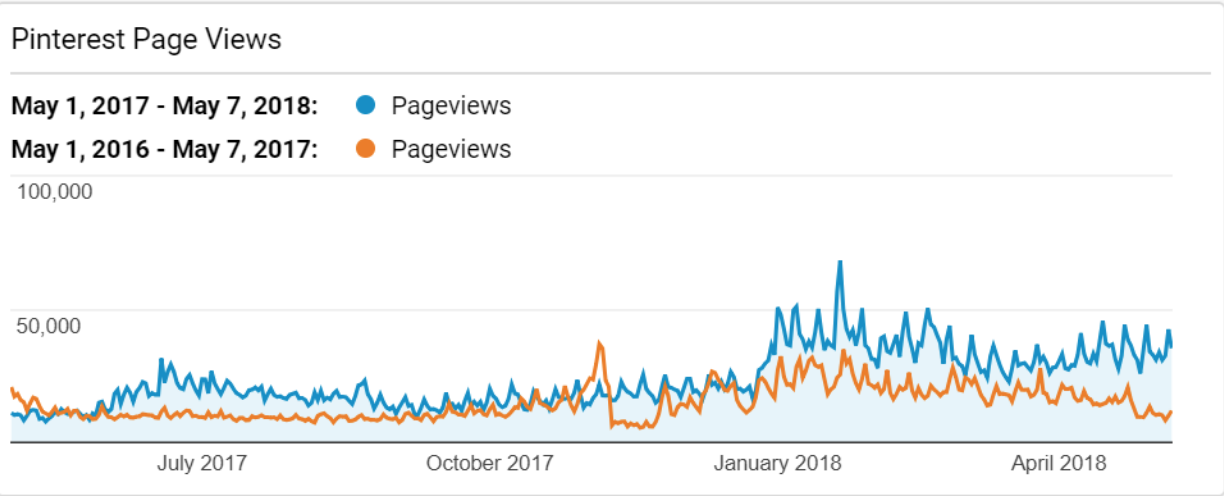
Client #2:
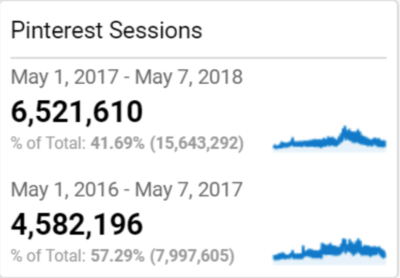
Client #3:
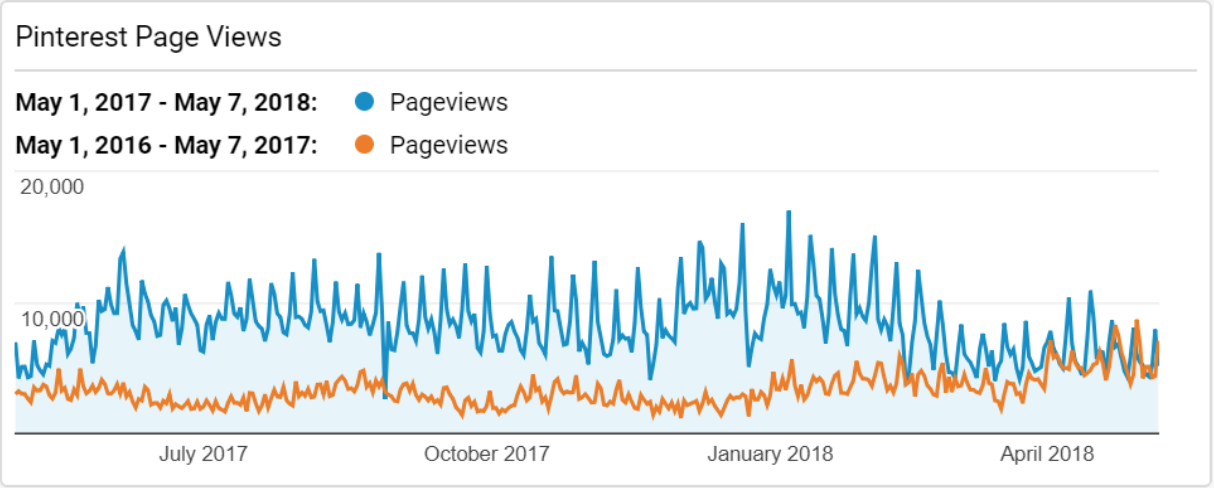
Client #4:
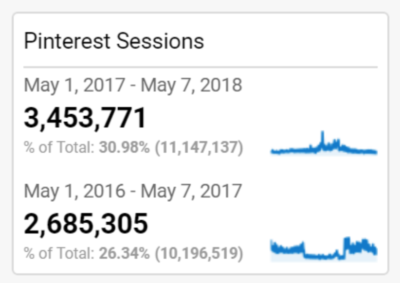
If you have not nailed down your target audience, sit down and write down everything you can about them on paper today. Above all else, just keep pinning. Work on using keywords that will really target your audience. Take all these things into consideration and then leave us a comment and tell us what your game plan is. We’d love to hear from you.

This post contains affiliate links, which means if you make a purchase through these links, I may receive a small commission at no extra cost to you. Click here to read my full disclosure policy.
If you haven’t already, make sure you download the Ultimate Pinterest Planner that I created with Tailwind. When you download the planner, you’ll also receive my weekly newsletter — it’s full of super helpful resources and tips for your online business.
I also now have an Amazon Influencer shop. I can use this shop to share things like my favorite business books or even my brand-new standing desk with you. Make sure to check it out!
Time Stamp:
Intro
2:31 – 2018 Best Practices
5:45 – The Algorithm
10:10 – Change # 1 – Image Size
12:00 – Change # 2 – The Definition of Fresh Content
14:10 – Change # 3 – The First Five Pins of the Day
18:36 – Change # 4 – Board Focus
19:45 – Change # 5 – Take a Deep Breath
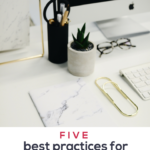




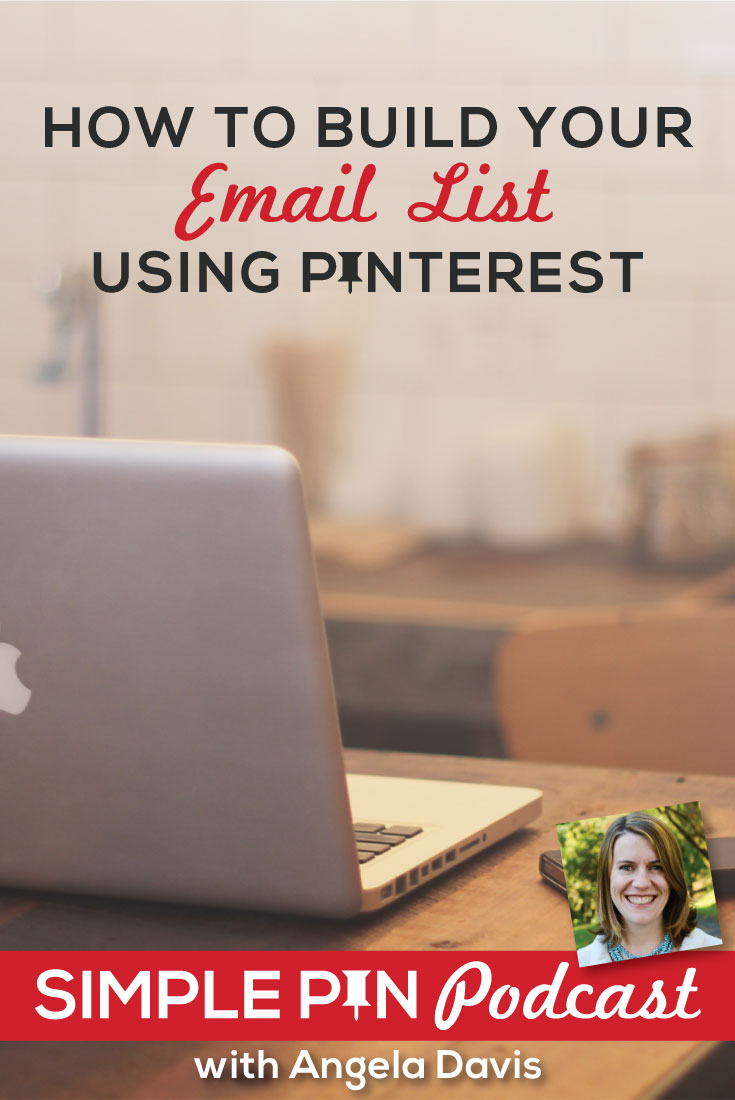
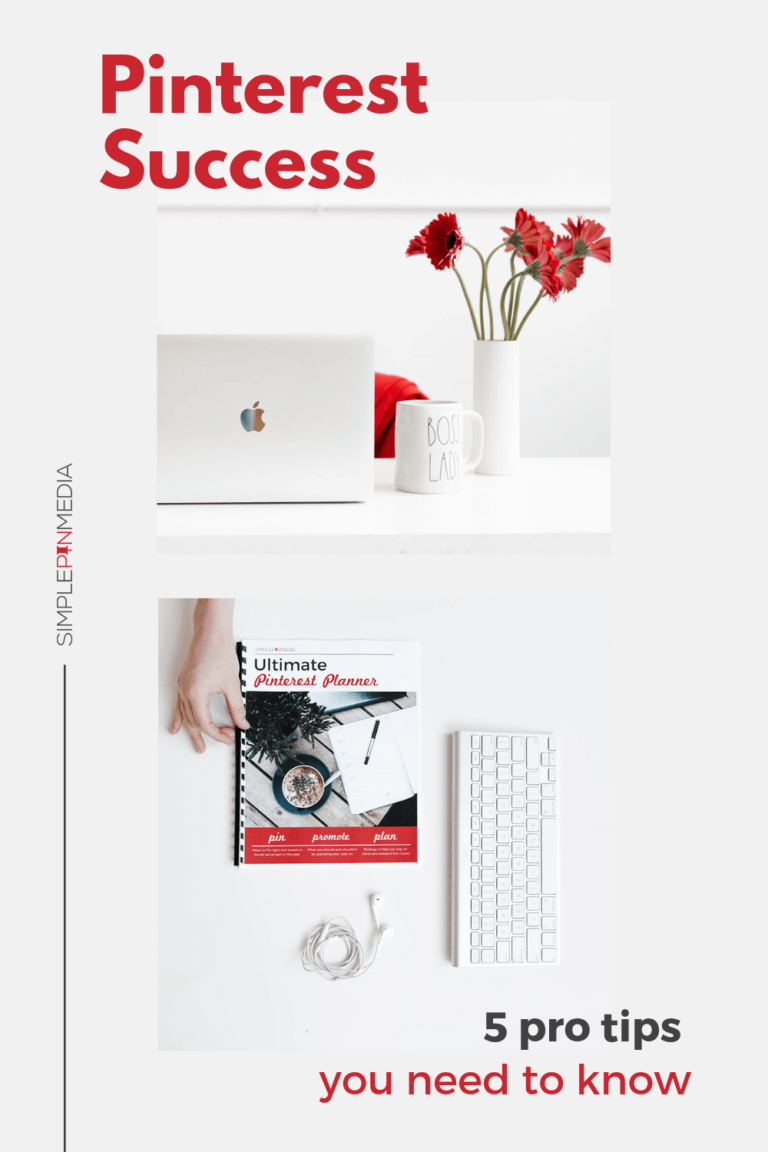

Hello
Kate,
This post covers many crucial information about interest. I know you are a Pinterst master and know many things about it. I am new in Pinterest and these types of guide always useful to me. If anybody has good knowledge of Pinterest then they can effectively market their brand with this platform.
Thanks for sharing.
Have a great day ahead.
Praveen verma
Hi Kate- Thanks for sharing these helpful tips. I’ve been listening to your podcasts and reading posts in your FB group and they are very helpful! I have a question about Change #2 (pinning from your own site, not repinning from Pinterest) If you use a scheduler like Tailwind (who I believe creates a new pin) – does it matter if you’re selecting from your site or a Pinterest board? Thanks in advance for your help!
Nope, it doesn’t since they both act as a new pin. 🙂
Hi Kate,
Thanks so much for simplifying these learnings and insights from Pinterest. I feel better knowing that what I’m doing is actually on par with what I should be doing, with a couple or adjustments 🙂 Just a couple of questions. 1. Do you recommend paying for Tailwind or sticking to the free version? 2. Regarding point 5, what should I be looking for in my Google Analytics?
thanks again!
Pay! Totally worth it.
You should be looking for what pins are sending the most traffic to your site under the social tab
I’ve recently discovered you. We are at the early stages of getting our Pinterest act together & your information and insights are great – thanks! I have a general terminology question – “pin” & “post” seem to be terms that ought to mean different things but often seem not to. I can not find a clear definition that helps me to understand if they are the same thing or not. Can you help?
Hi Kate,
Thank you so much for such a helpful explanation! I’ve been struggling to find anything clear and informed regarding the recent changes, and am so happy to have found your post!
I’m a little confused regarding the ‘fresh’ pins aspect. Does this mean that I should never be pinning my existing pins anywhere, rather I should always go to my own site and create new pins from there every day? Can this work with a scheduling tool? I don’t use Tailwind at the moment so I’m not too familiar with how it works, but I don’t see how this could be possible with the service I’m using.
Also I’m not sure what a ‘non-unique’ description means in this context. Should I just change the description on one of my existing pins and then re-pin it with the new description? And if so, is it ok to do that on a regular basis.
I’m sorry if these are silly questions!! Thank you once again for such a helpful post, I’m really looking forward to learning more from you 🙂
Tara
http://www.slightlysorted.com
I have these same questions so hoping you’ll reply!
The First Five Pins of the Day… I am running a Facebook group about Pinterest in Russian
language. And I was going to explain to the members of the groop about it…
It’s not relevant anymore.
Hey thanks for the great information! I have a question though, you said that Pinterest said it’s best to pin from your site and let others repin. I usually pin directly from my site to a private board and then let boardbooster repin from that private board to a couple boards, including group boards. Do you think it would be better to pin directly from my site to those public boards?
I would pin directly from your site to public boards for sure! No reason to do private.
HAven’t listned to this one yet but I’m avid listener of your amazing, action-filled podcasts. I read many blog posts about engagement, mostly on other topics that Pinterest as you’re my main source of info for Pinterest…many are good but there are so many others that are just fluff and personal perceptions backed by popular belief rather than actual data. Thanks for being a champ in providing awesome content!
Kate, I am brand new to all of this and am so grateful to have found your podcast! Thank you for all the information you are sharing.
My question is this: If I am pinning from blog content, what size photos should I be using in my blog content so that they will show up on Pinterest? I have made some pins 900 X 600 as recommended but they don’t look great on my blog. Is there a way to make an image that will look great on the blog and great as a pin too?
600×900 is the size I use and it looks best on the blog too! 🙂
Great info- thanks for breaking it down for us 😀
Thanks for this helpful article. My images are 2:3 but I use 400 by 600. Does that work just as well or is it too small?
Also, if I’m using Tailwind, is it OK to pin from my main board to Tailwind and allow Tailwind to repin? Or do I need to pin to Tailwind from my site?
It’s fine to pin from your main board to Tailwind
The original size of the uploaded images should be larger (e.g., 1000 x 1500 or at least 600 x 900) since Pinterest compresses images on their end. Using 400 x 600 could result in your images looking pixelated on Pinterest
Ok, thanks so much.